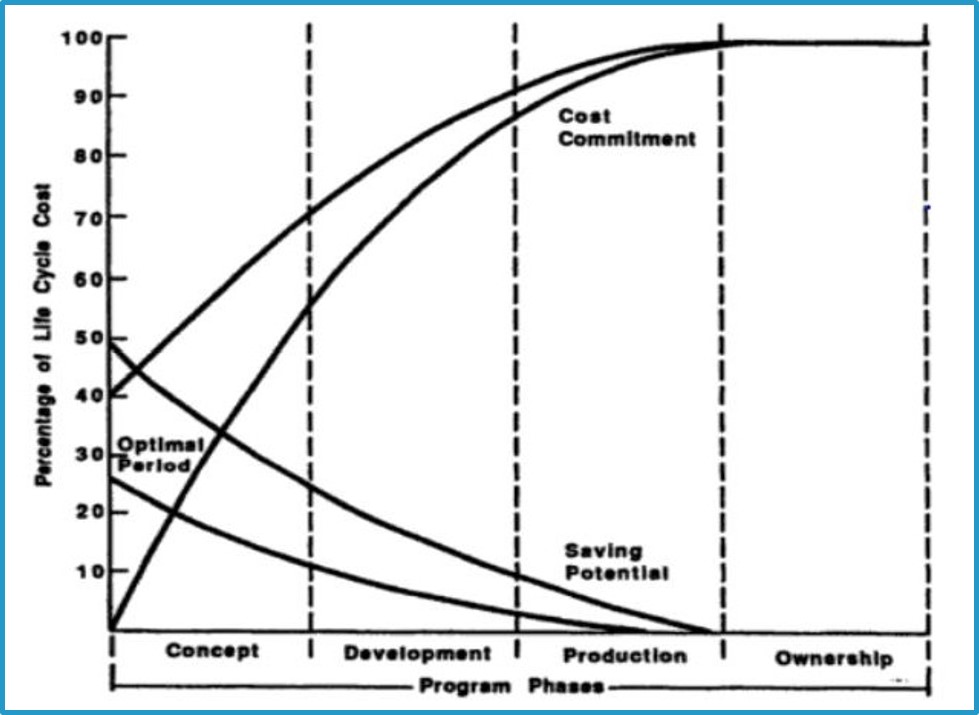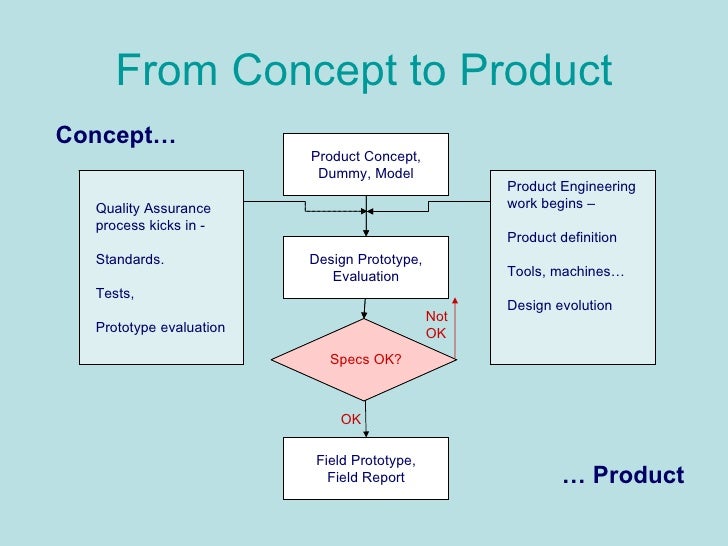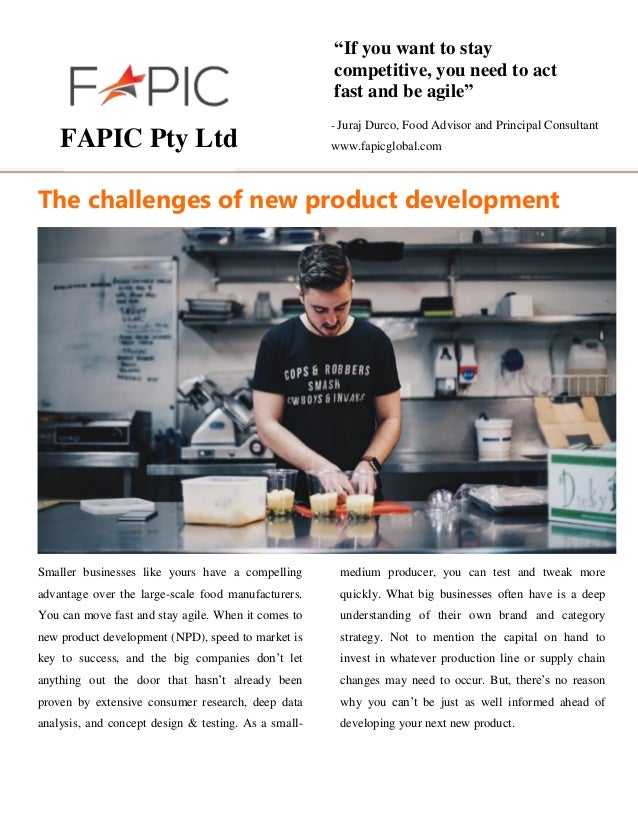- Understanding Product Development From Concept To Production Examples
- Understanding Product Development From Concept To Production Class
- Understanding Product Development From Concept To Production Worksheet
The marketing efforts of an enterprise are directed by marketing management philosophies, also called as marketing concepts, so as to gain the desired exchange outcomes. It determines the outlook of the producers. In this context, the product and production concepts are often compared and contrasted. However, the two differ in the sense that product concept states that the consumers prefer the products which are best in terms of quality.
As against, if we talk about production concept proposes that consumer would like to have a product which is widely available as well as reasonable in price. So in this article excerpt, you will find the differences between product concept and production concept.
Content: Product Concept Vs Production Concept
Comparison Chart
| Basis for Comparison | Product Concept | Production Concept |
|---|---|---|
| Meaning | Product Concept is a marketing philosophy which assumes that customers admire quality-rich products, with advanced features. | Production Concept is an approach which believes that customers are willing to buy the products which are easily available at low prices. |
| Means | Improvement in product over time | Improvement in the production efficiency and distribution coverage. |
| Objective | To provide better quality products to the customers. | To achieve the economies of scale. |
| Emphasis on | Product | Production |
The research literature concerning the new product development process (NPD) is reviewed and this is placed within the concepts required for effective intrapreneurial learning (IL). Step 1: Product Concept This is where you begin to flesh out your basic idea. Think about what you want your product to be, what its use is, and who would use it. A solid understanding of economics helps build a strong foundation in almost every area of life. Here are four economic concepts consumers need to know. The Alpha design and testing is essential in understanding the limitations of the product and in refining the design. Beta The Beta prototype development incorporates the design refinements found in Alpha development and implements them into production tooling, molds, PCBs, subassemblies, enclosures, GUI designs, etc.
Definition of Product Concept
Product concept, as the name suggests concentrates on the features, quality and performance of the product. In other words, product concept states that the consumers will prefer those products that are superior to other products in the market, in terms of their specifications and quality, meaning that the marketer is aware that whether the product offered will fetch demand or not or whether the product design will increase the sales or not.
So, the firm invests a lot of resources like money, time and manpower in order to research the needs and expectations of the target audience from the product. Therefore, it requires continuous improvement in the product, to make it better.


The managers often believe that a product with outstanding quality and features will create its own market. However, they are unaware of the fact that a product cannot be successful in the market if it is not priced, advertised, distributed and sold in right manner.

Nevertheless, the product concept focuses on the product rather than the customer needs which are to be satisfied and so it results in ‘marketing myopia’.
Definition of Production Concept
The production concept is based on the assumption that the consumers will like the product that has wide availability and are affordable. Hence, the company’s management must concentrate on constantly upgrading the production and distribution efficiency, reducing cost and mass production. The concept is suitable when:
- The product’s demand is greater than its supply.
- The cost of the product is very high, which requires good productivity, in order to reduce it.
Production Concept is suitable for the firm when it operates in a market with high growth prospects as well as the anticipated economies of scale is noteworthy.
In the 1950s this concept worked because there were only a handful of producers, and consumers are many. But, at present, the concept can work only when the marketers object to expand the market. That is why, the philosophy hardly exists, as there are only a few marketers that follow it.
Key Differences Between Product Concept and Production Concept
The difference between product concept and production concept is described in the points given below:
- Product concept refers to a philosophy which is based on the assumption that customers will prefer those products which are good in quality, specifications and performance. On the contrary, Production Concept is a marketing phenomenon that holds that customers are ready to buy the product which is cheap in price and easily available.
- Product concept can be followed by improvement in the product. Conversely, production concept can be practised by upgrading the production efficiency and distribution coverage.
- Product concept aims at providing quality rich products, with innovative features and outstanding performance to the customers. As against, aims at achieving economies of scale, through mass production and improving the supply chain.
- While in a product concept, the product is given the utmost preference, in production concept, the production of goods is given top priority.
Conclusion
Production Concept is an old concept and at that time increase in production of the goods was the major concern of the firms, as whatever the firms produce has worth for the customers. At recent times, this concept is no longer in use as customers are quality sensitive. And, the demand of the product automatically increases, if it has the required quality and fulfils customers expectations thoroughly.
Indeed, if the company needs to survive in the long run, it must follow product concept, by making the customers habitual with the quality products offered by the company.
Related Differences
You Might Also Like:
Transform your business or product idea into commercial reality with our guide to setting up a product development process.
Product development – often called new product development (NPD) or new product management – is the process of creating and launching a new product, service or relaunching an existing service or product. It’s an approach that is deliberately structured and aims to sidestep the chaos of creativity and ensure that you remain on track transforming an idea into a reality.
There’s an entire industry that has sprung up with processes, structures and frameworks for running a product development process. While all have merits, it’s possible to use a simple series of steps to help create a successful product or service.
By working through each step, you’ll be better placed to pick the right idea, do the right research and create a product development pipeline that can be used again. And by sharing your NPD approach with potential investors, you’ll inspire confidence when seeking funding for your start up.
Depending on what you’re developing, there are around eight steps you can follow. These are usually the same no matter what NPD approach or system you adopt:
- Idea generation – The process of coming up with potential ideas for a new product or service, or ideas on how to improve an existing product.
- Filtering and screening – How to select the best idea to take forwards into development.
- Concept development – Testing the idea with customers.
- Commercial and market analysis – The practicality of launching this idea, costs involved and the market.
- Development – The technical stage that sets the manufacturing or service delivery process.
- Testing – Puts the prototype product or service in the hands of customers to get feedback and refine the product.
- Marketing and pricing – How you’ll price and market the new or improved product or service.
- Go to market – The strategy and approach you’ll take to put the new product on sale and into the hands of customers.
Each stage is designed as a go/no-go stage. By following each stage you’ll limit the risk and lessen the investment you need if the idea turns out to not be viable. Not following a production development process risks going to market with a half-baked business idea that doesn’t appeal to customers, or is challenging to manufacture and sell.
1. Idea generation
Ideas are the lifeblood of any business and you should use a variety of techniques to generate lots of ideas for your new product or service. Ideas can be captured from all sources but the first step is to use tools such as SWOT (Strengths, Weaknesses, Opportunities, Threats) and PESTLE (Political, Economic, Social, Technological, Legal and Environmental) to map out what’s happening in your market and to identify opportunities.
Watch this: Coming up with good ideas is often a challenge. This video by Steven Johnson, the author of The Invention of Air, looks at where good ideas come from:
Other tools to use to help generate ideas include:
- Brainstorming – There are a variety of techniques and stimulus to help you brainstorm but the aim is to generate a range of ideas framed by the SWOT and PESTLE analysis. Capture each idea on a separate piece of paper. Then list what the idea is, how it would work, what is different about it and what customer need it addresses.
- Competitor analysis – Look at competitors and see what they’re doing. What have they failed or succeeded with? What would you do differently? What are customers complaining about? Use these to come up with ideas that exploit a gap in the market.
- Suggestions – Ask your staff and customers what they think. From something as simple as a suggestion box to a more formal survey or focus group, talking to your target customers and your staff can generate lots of great ideas.
Once completed, this stage should have generated lots of ideas for new products or improvements to existing ones – the challenge is, you may have too many ideas! The next stage will help narrow down the options.
Looking for inspiration and ideas? Check out the top 17 business ideas for 2017.
2. Filtering and screening
You won’t be able to develop every idea you have. This stage is about filtering out the less viable ideas so you can devote all your resources to the ones with the most potential. To do this:
- Set criteria – Write down a list of criteria that each idea must be assessed with, such as customer need, potential market size, cost of development, existing competitors, or how it fits with your objectives.
- Use traffic lights – Set a red, amber and green colour for how attractive the idea is in each criteria. For example, low cost might be green, whereas lots of existing competitors might be coloured red. Ideas with more greens are more attractive to take to the next stage.
- Filter ruthlessly – You should aim to ditch around two thirds of your ideas, ending up with two or three candidates that you think are viable.
Watch this: Need some help filtering your ideas? The US-based MIT Launch X programme offers up lots of advice for filtering ideas for entrepreneurs and start ups in this useful video:
3. Concept development
Write up each of your candidate ideas as if it was a real product, detailing what it is, what it offers, how much it costs and how it works. You can use illustrations to bring your ideas to life and into presentable form.
This stage is about asking potential customers how they would rank each of your candidate ideas. Get a group of customers together and take them through each concept, asking them for their feedback. Would they need it? Would they buy it? How much would they pay for it? Would they buy it from you? What do they like or dislike about it?
Rank the candidate ideas, making changes based on feedback, and then take one idea through to the next stage.
4. Commercial and market analysis
Now the real work begins. You’ll need to investigate the commercial and business foundations of the idea – what would it take to manufacturer the product or operate the service. You’ll need to make assumptions about number of customers, ARPU (average revenue per user) and how much people will pay, your costs and overheads, marketing costs and sales assumptions.
Is the product viable? What are the areas for concern, such as pricing or the volume of customers you’ll need? What demand are you assuming for the product? What evidence is there for this? What is the breakeven point, and what will the competition do if you launched it?

Use spreadsheets and conduct some financial modelling showing how the product or service would sell over the first year, and your costs and assumptions.
Be realistic – Is the idea profitable and can you make it work? If not, then now is the stage to stop and go back to an earlier stage.
5. Development
If you’ve a viable product idea that has tested well with customers and makes commercial sense, then you can roll up your sleeves and move into the development stage. This is about identifying the specifications and processes you’ll use to either make a product or set-up and deliver a service.
You’ll need to consider the supply chain – how you’ll source materials – as well as the manufacturing methods or infrastructure you’ll need to offer a service. For example, offering a phone-based service might need a call centre and phone system.
6. Testing
By now, your idea is nearly a ready-to-sell product or service – time to get it back into the hands of potential customers for further polishing and refinement. Use this stage to put prototype products, packaging examples, marketing materials and service details such as prototype websites into test groups.
Watch how customers interact with these, gather feedback and see how you can refine your product. These last-minute changes are invaluable for fine-tuning your offering.
7. Marketing and pricing
You’re now ready for the pre-launch stage. You’ll need to finalise marketing plans and pricing – creating marketing messages and advertising across channels. Establish any introductory pricing or discounts to encourage early take up by customers and put in place performance goals for your marketing. Set weekly and monthly marketing targets, such as the number of customers you need to acquire and how much they should spend. Check this against the expected performance of your business analysis that you created in step 4.
8. Go to market and launch
Understanding Product Development From Concept To Production Examples
The stage is now set for your product launch. Use this final stage to sign off marketing plans and book advertising space, as well as set up the logistics for taking orders or handling customers.
Create a detailed launch plan – How will you announce it and start distributing it? What elements, such as PR, need to be in place and what result should they create? Align all your marketing channels – such as PPC advertising and social media – with a launch date for promoting your new product.
Understanding Product Development From Concept To Production Class
During this phase, monitor progress in detail, checking everything is going to plan.
Finally, create an exit strategy. Even if you’ve completed every step, sometimes a business idea or new product simply doesn’t work. Put down some red lines that indicate things are not performing well, and be prepared to stop a product that looks like it will fail soon after launch before you incur too many losses.
Understanding Product Development From Concept To Production Worksheet
